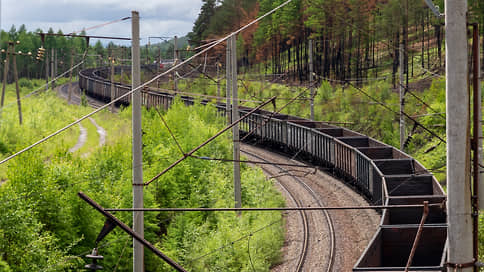Exports of Russian energy will gradually decline
[ad_1]

The export of Russian coal on the horizon until 2050 will slightly decrease, while a significant drop in the export of energy coal will be offset by an increase in the supply of coking coal, analysts at Yakov and Partners believe. The key consumers of Russian coal – China and India – intend to increase their own production in the coming decades, so Russian exports will have to be reoriented to the countries of Southeast Asia. According to analysts, peak exports in 2021 will no longer be surpassed.
Exports of Russian thermal coal on the horizon until 2050, despite demand from developing countries, will gradually decline, according to a review prepared by Yakov and Partners (the former Russian division of McKinsey). According to analysts, energy coal exports will never reach the peaks of 2021 and 2022, when 191 million and 175 million tons were exported, respectively.
Analysts considered three scenarios for the development of the situation, depending on the dynamics of the world economy: “basic”, “recession” and “accelerated development”. Under the baseline scenario, energy coal exports fall by 16% in 2030, and by 32% by 2050. The recession option calls for a reduction of 9% by 2030 and 3% by 2050. With accelerated development, exports fall by 18% and 67%, respectively.
A drop in supplies will result in the self-sufficiency of key consumers of Russian coal.
China plans to reduce the contribution of coal to energy generation, and local production already covers more than 90% of energy coal consumption. According to the forecasts of Yakov and Partners, by 2030, energy coal imports to China will decrease by 3.7 times compared to 2021 levels, to 71 million tons. Production by 2030 will increase by 2.5%, to 3.6 billion tons. India intends to increase domestic coal production by 1.5 times compared to 2021, reaching a level of 1 billion tons. Imports will decrease by 11%, to 117 million tons.
As a result, Russian deliveries to these countries will drop to 5–10 million tons of coal: in China, this figure will be reached in the mid-2030s, and in India by 2050. In 2022, 47 million tons of Russian thermal coal were supplied to China, and 8 million tons to India. However, by the early 2030s, analysts expect Russia to start increasing energy coal exports to Southeast Asia (SEA), where it will have to compete with Indonesia, which has the advantage of cheaper logistics. By 2030, India (approximately 30%), Turkey and non-EU European countries (20–25%), as well as Southeast Asian countries (20–25%) will be the key consumers of Russian energy coal. By 2050, more than 60% of thermal coal from Russia will come from Southeast Asian countries.
Sergey Mochalnikov, Deputy Head of the Ministry of Energy of the Russian Federation, August 25:
“It can be unequivocally argued that production and exports (of coal. – Kommersant) will not decrease by the end of the decade, and demand already today exceeds 200 million tons.”
The decrease in exports of thermal coal will be offset by an increase in supplies of coking coal. According to the baseline scenario, it will increase by 55% by 2030, and by 111% by 2050 compared to the 2022 level of 47 million tons. By 2030, more than 60% of exports will go to India, about 20% to Southeast Asian countries and less than 10% to Turkey and non-EU countries in Europe. By 2050, India’s share will drop to 55%. China will gradually reduce imports of Russian metallurgical coal, becoming self-sufficient, and by 2030 supplies to China will decrease by 15%, to 46 million tons.
As a result, the total export of Russian coal by 2030 under the baseline scenario will decrease by 1% compared to 2022, when it amounted to 221 million tons. The decline in exports by 2050 will be the same 1%. At the same time, the “accelerated development” scenario assumes a sharp reduction in supplies after 2030.
IPEM deputy general director Alexander Grigoriev says the only limit to Russian coal exports is transport infrastructure. The need for cheap electricity in the Asia-Pacific countries will only increase, the construction of tens of gigawatts of new coal-fired thermal power plants will be required, and a significant part of them will already operate at super-supercritical steam parameters (SCS) – they have less specific greenhouse gas emissions. This is good news for Russia, since such thermal power plants require high-quality hard coal, which the country mainly exports, in contrast to Indonesia, which is represented mainly by cheap sub-bituminous coals.
The export market for thermal coal is quite fragmented, says Boris Krasnozhenov of Alfa Bank. Many countries have significantly reduced investment in mining and exploration of coal, he notes, so it is still difficult to talk about a high probability of a reduction in Russian coal exports by tens of percent.
[ad_2]
Source link





